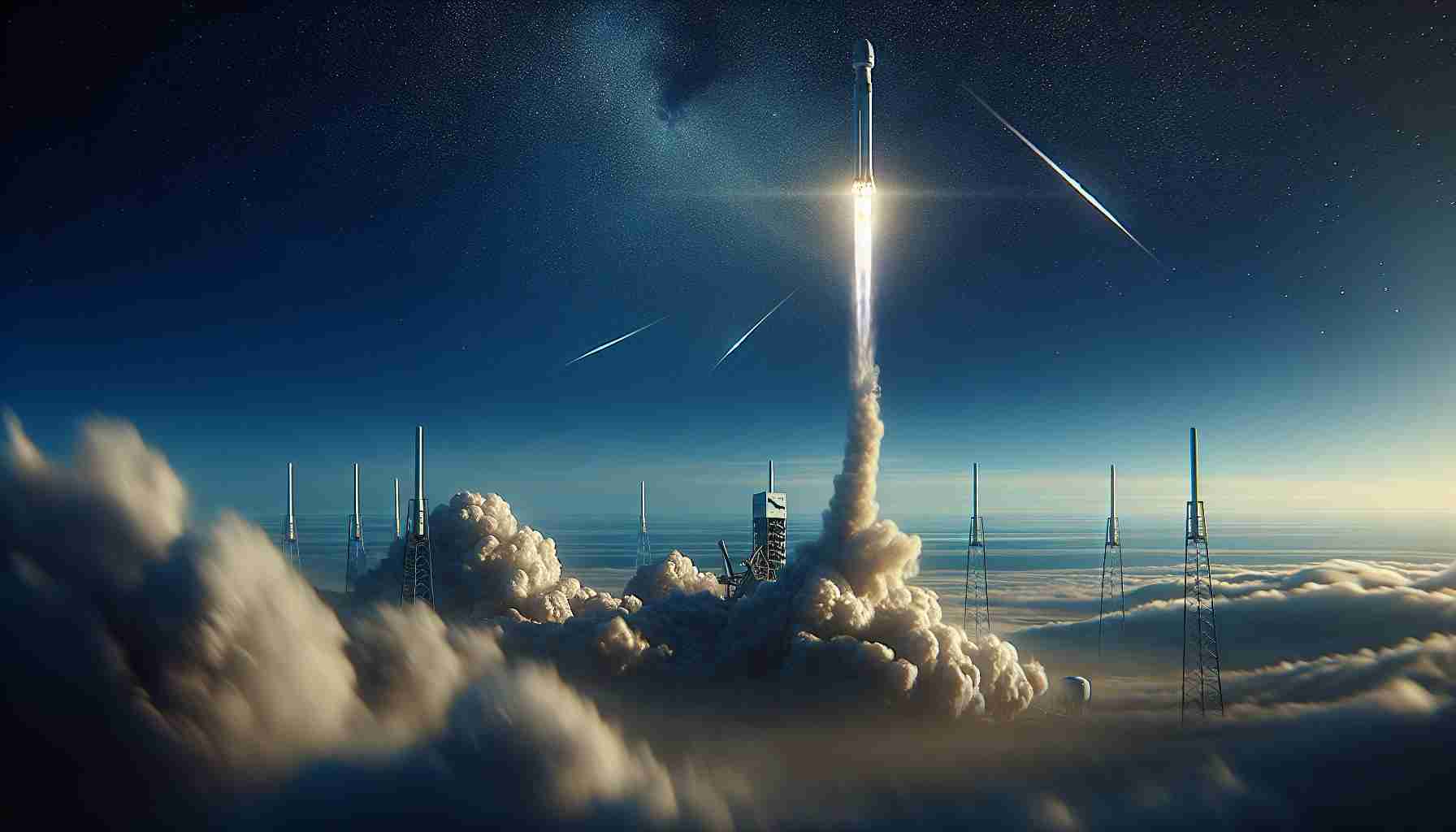In an impressive display of innovation, SpaceX has successfully launched its latest mission, ushering in a new era for satellite connectivity.
On December 13, 2024, at 21:55 UTC, the SpaceX Falcon 9 rocket, designated B1082-9, lifted off from the Space Launch Complex 4 East (SLC-4E) at Vandenberg Space Force Base in California. This mission, dubbed Starlink Group 11-2, was entirely funded by the company itself as part of its expansive Starlink initiative aimed at providing internet coverage globally.
With an impressive payload mass of 16,000 kg (35,200 lb), these satellites are now deployed in low-Earth orbit, enhancing the existing network’s capability. After delivering the payload, the Falcon 9 rocket’s first stage successfully returned, landing on the Drone Ship “Of Course I Still Love You.”
Recovery efforts were also made for the fairing halves, which were successfully retrieved by the support vessel, GO Beyond. This mission was quite significant; it marked the 409th overall Falcon 9 launch and the 124th for the year 2024.
These advancements reinforce SpaceX’s commitment to revolutionizing global internet access, bringing essential connectivity to even the most remote regions. As satellite technology evolves, the possibilities for personal and commercial connectivity are reaching new heights.
SpaceX’s Stellar Leap: Reimagining Global Internet Connectivity with Starlink
Introduction
In a groundbreaking mission that redefines satellite connectivity, SpaceX has successfully launched its latest batch of Starlink satellites. This initiative promises to bring internet access to unprecedented corners of the globe, marking a significant milestone in satellite technology and its applications.
Launch Details
On December 13, 2024, at 21:55 UTC, the Falcon 9 rocket, serial number B1082-9, blasted off from the Space Launch Complex 4 East (SLC-4E) at Vandenberg Space Force Base in California. The mission, called Starlink Group 11-2, was completely funded by SpaceX and aims to expand its growing Starlink network, which has become synonymous with global satellite internet.
Technical Specifications and Innovations
The recently launched satellites carried a total payload mass of approximately 16,000 kg (35,200 lb), positioned in low-Earth orbit. This strategic placement not only reduces latency compared to traditional satellite internet but also enhances bandwidth and coverage.
Key aspects of this mission include:
– First Stage Recovery: Following the launch, the Falcon 9 rocket’s first stage successfully returned, landing on the drone ship “Of Course I Still Love You.” This recovery is a critical part of SpaceX’s cost-reduction strategy for space operations.
– Fairing Recovery: The fairing halves were also efficiently retrieved by the support vessel GO Beyond, showcasing SpaceX’s commitment to reusability.
Market Impact and Use Cases
The enhancement of the Starlink network holds vast potential for numerous applications:
– Remote Connectivity: Starlink’s capabilities can bridge the digital divide, providing internet access to rural and underserved communities globally.
– Emergency Services: The robustness of satellite internet can be critical in disaster response efforts, ensuring communication when terrestrial networks fail.
– Business Applications: Industries that require high-speed, reliable internet, such as shipping, aviation, and telecommunications, can leverage Starlink’s capabilities for operational efficiency.
Pros and Cons
Pros:
– Global coverage, including remote areas.
– High-speed internet with low latency.
– Scalable network for future expansions.
Cons:
– Potential for space debris and regulatory challenges.
– Initial setup costs for end-users and ongoing service fees.
Trends and Predictions
As SpaceX continues to launch more satellites, the trend towards increasing satellite constellations is expected to grow. This may lead to:
– Increased Competition: Other companies might join the race, enhancing service offerings and driving down costs for consumers.
– Technological Advances: Innovations in satellite technology, including the deployment of next-gen satellites capable of higher throughput and improved sustainability practices, will shape the future of satellite internet.
Security Aspects
As satellite networks proliferate, so too do concerns about security. Protecting satellite communications against potential hacking and ensuring that user data remains secure is vital. SpaceX is likely to focus on advanced encryption methods and continual security updates for their Starlink system.
Conclusion
SpaceX’s latest launch marks a significant advancement in satellite technology, pushing the boundaries of internet accessibility. With its expansive Starlink initiative, the company is setting the stage for a future where connectivity is global, robust, and reliable. For more updates on this exciting development, visit the SpaceX website.



















